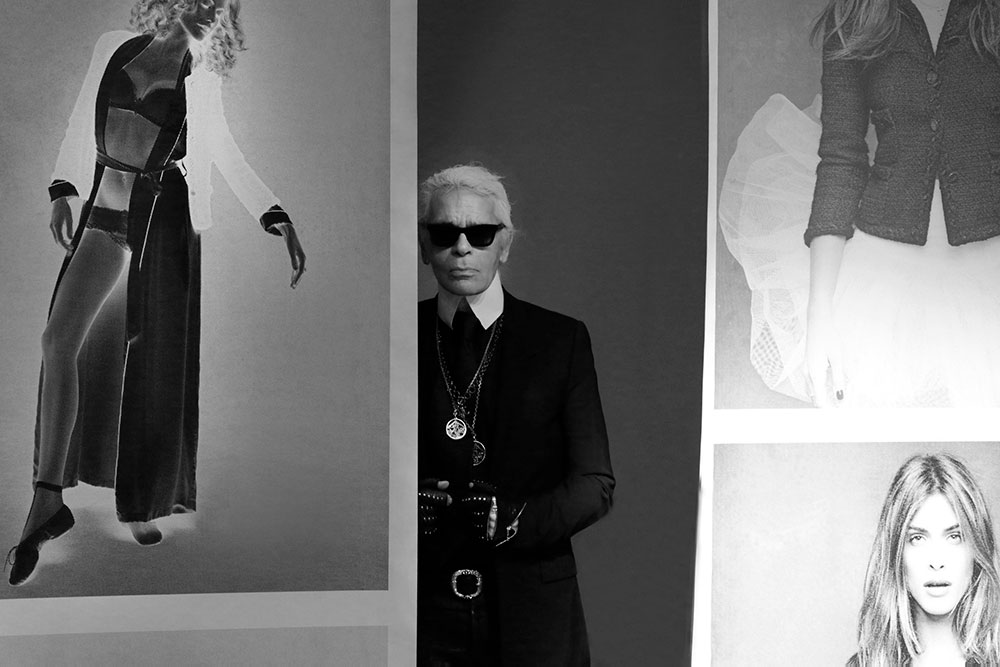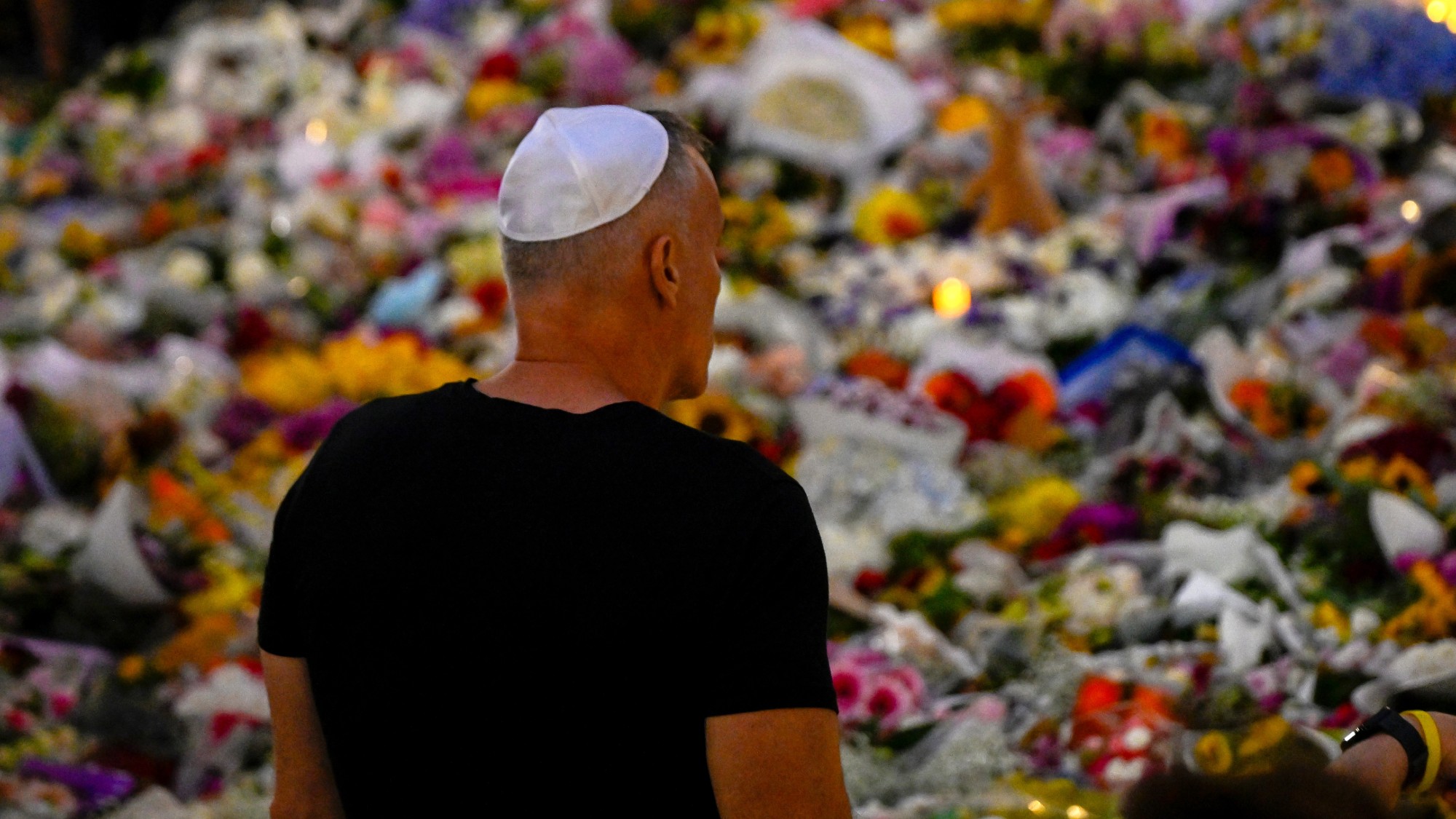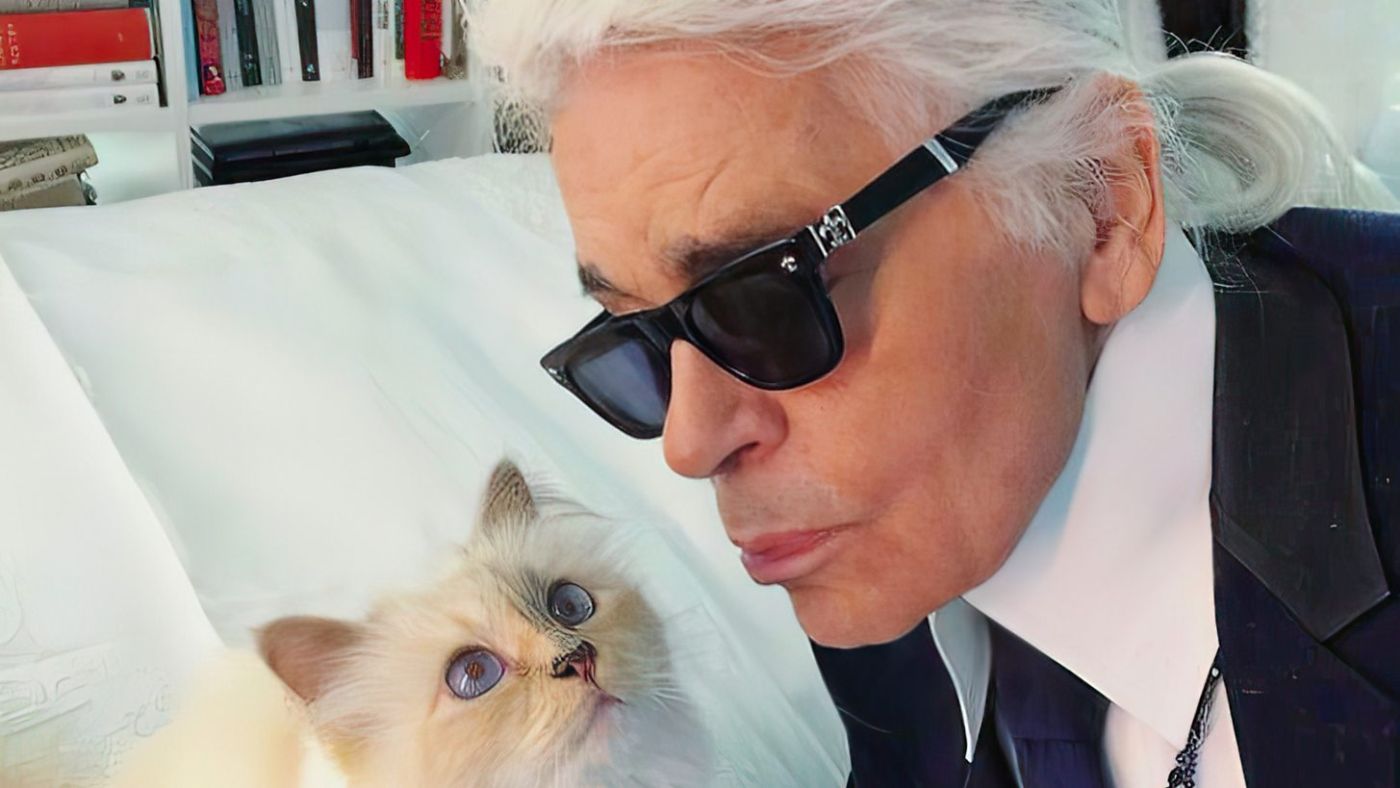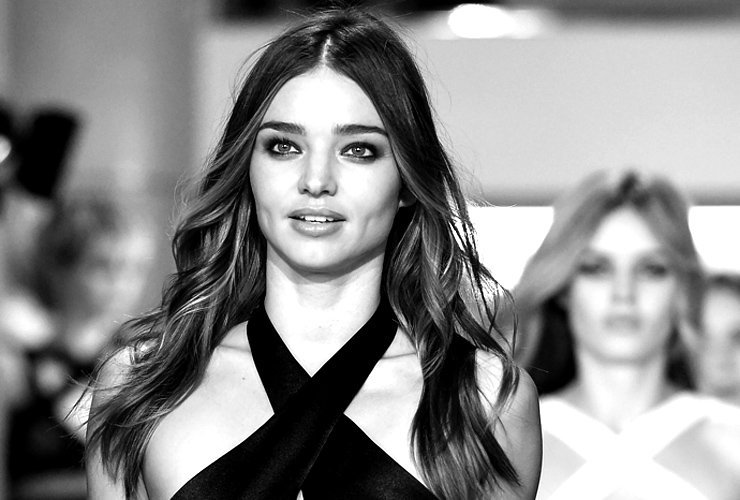Creative genius: the day The Week met Karl Lagerfeld
In honour of the legendary designer’s death, here is a 2014 interview with Lagerfeld

In tribute to the late Karl Lagerfeld, we revisit Godfrey Deeny’s 2014 interview with the German designer who helmed Chanel for over 35 years.
“Miss Choupette woke me up last night,” says Karl Lagerfeld. “She was hungry; and then I could not get back to asleep. She jumped on my face about half past two in the morning. She likes to have supper in the middle of the night.”
Few would dare to treat the world’s most famous fashion designer in this discourteous manner. But Choupette, his Burmese cat, is free to do whatever she wants. The designer credits Choupette, who has over 35,000 Twitter followers, with making him a nicer person, and calls his sudden obsession with her “an unexpected change. And I like nothing more than unexpected things. They are vital because I am a designer.”
The Week
Escape your echo chamber. Get the facts behind the news, plus analysis from multiple perspectives.

Sign up for The Week's Free Newsletters
From our morning news briefing to a weekly Good News Newsletter, get the best of The Week delivered directly to your inbox.
From our morning news briefing to a weekly Good News Newsletter, get the best of The Week delivered directly to your inbox.
Lagerfeld himself challenges all expectations. I have known him for 20 years, since I took over as bureau chief for WWD. At first, I was daunted by the prospect of meeting him – his public persona is perhaps a little frightening, with his dark glasses, and propensity for caustic comments on the size and style of other celebrities. But, in person, he is something of a pussycat, with beautiful manners. He is courteous, informed about what you are up to, and speaks in the same way to everyone.
I have seen him address Anna Wintour, the editor-in-chief of US Vogue, and a staff cleaner at his Chanel studio in the same tone – the mark of a gentleman. Unlike other designers, I have never heard him raise his voice to staff. There is some debate about his exact age, but it’s probably 80. His energy is phenomenal and physically he’s the best-preserved octogenarian I know. A decade ago, he shed 40 kilos in order to be able to wear Hedi Slimane razor-thin Dior Homme tailoring. He’s put on a little weight since then, but he’s still trim enough to wear tight jeans.
Of late, he favours his own brand, usually dressing in black denim accessorised with his famous sunglasses (he has hundreds of pairs). He wears Cuban-heeled boots by Massaro, high-collared shirts from Hilditch & Key, antique cufflinks, and thick silk ties. Over the top of that, he tends to sport a Dior Homme frock coat, but recently, at a runway show, he donned a checked Sacai blouson. (Classic Lagerfeld, of course, to know the hippest new Japanese designer). His remarkably dense mane is powdered white.
Lagerfeld lives in Paris on the quai Voltaire, across the Seine from the Louvre, in a massive, north-facing apartment. He describes its hyper-modernist style as “like the place where you bring babies that are born too early.” He can be reclusive and, apart from Choupette, perhaps, loves nothing more than the company of his extensive library. “The thing I like best in life are books and paper, and I like also fashion because it starts with a sketch; which is how I knew I could make a living with fashion, even if, at one time, I wanted to be a portrait artist or a cartoonist. So books and paper for me are magic. When I was a child, I was always afraid I was going to run out of beautiful paper to sketch on. One day I asked my father to bring me beautiful paper, and he said to me, ‘If you are running low on paper, you can sketch on the other side.’ I said to my father, never ever in my life will I sketch on the other side of the piece of paper.”
A free daily email with the biggest news stories of the day – and the best features from TheWeek.com
Once, when I showed him a copy of a football/fashion magazine I edit – and to which he has contributed amazing sketches of players including Totti, Rooney, Henry and Ronaldo – his immediate reaction was not to read it. Instead, he smelled it. “I am stationery-obsessed. Paper is the thing that I like best. I love its smell. I couldn’t live without it. An iPad is okay, but the pleasure of reading a book is something that no screen can give you.” (He has recently taken to doing some of his sketching on iPads.)
I was hoping to talk to him in his library, dark glasses on, cat on his knee, like a James Bond villain. Instead, we meet in his studio. Choupette isn’t here, but Lagerfeld has photographs. “You see, here is a picture of Choupette enjoying lunch. Here she is posing. She can be a real grande dame. I get daily updates from her two maids,” he says proudly. He then explains how he has someone on staff to prepare special dishes for her, and her favoured sleeping surface, when not on Lagerfeld’s bed, is an ermine blanket. “She will have a make-up line soon with Shu Uemura. Huh? It’s called Choupette Uemura!” cackles Lagerfeld. Amanda Harlech, Lagerfeld’s human muse and creative consultant, is also a Choupette fan: “This cat is a superstar. Disney wants to make an animated movie about her. They are going to give her enormous sums!”
Choupette was a gift from Baptiste Giabiconi, Lagerfeld’s devastatingly handsome and well-dressed muse, who found her in a rural cattery near Rouen. Despite all the attention she gets, it was tactless of the privileged puss to disturb her papa’s sleep just before the launch of his new collection. But after seeing it, I realised that Lagerfeld’s apparent insouciance was in fact the calm confidence that comes from knowing you are onto a winner. It was a massive show of Chanel’s new sporty couture.
The 65 models wore sneakers and danced down the stairs of the Grand Palais, which was done up like a high-tech Hollywood nightclub. “Women wear baskets [trainers] everywhere today, to work, to dance,” he tells me. The sneakers, with double CCs on their soles, were made by Chanel’s private bottier Massaro in couture materials like lace or embroidered tulle. “Looks like cream cakes, no?”
This is my fourth Lagerfeld event in as many months. The first was in Paris last October, and it too demonstrated that Lagerfeld is a genius who can afford not to take fashion seriously. This time the 19th-century Grand Palais was transformed into the world’s largest art gallery, featuring a dazzling parody of the artistic pretensions of fashion and fashion designers. He created 75 works of art, witty takes on Chanel’s signature pieces. A massive fake marble perfume bottle was entitled “Unsinkable”. Another, “Logo Crossing”, consisted of an enormous red lipstick protruding suggestively out of a double CC three metres high.
“It’s Chanel art!” chuckled Lagerfeld, when I spoke to him after the show. “In the past designers were desperate to be socially acceptable, because they were just clothes- makers. Now they all want to be recognised as artists. Too many of them have forgotten that their métier is to make dresses. I don’t own one of the objects. I am not a collector of my own work, darling.”
A month later, we are lunching in Sao Paulo. Travelling with Karl Lagerfeld is the fashion equivalent of a royal visit, or a rock star tour. It involves megawatt glamour and constant daily attention from literally hundreds of people. On this trip, his entourage includes actress Diane Kruger, fashion editor Carine Roitfeld, rocker socialite Alice Dellal and It girl Caroline de Maigret. During the welcome dinner, Dellal and de Maigret freak out the hotel’s security guards by playfully spinning at high speed inside the revolving doors. Lagerfeld’s Brazilian visit marks the penultimate appearance of the “Little Black Jacket” phenomenon, a 16-city worldwide tour of Lagerfeld’s portraits of celebrities wearing the classic Chanel jacket. He tells me that a book accompanying the exhibition has sold over 140,000 copies.
Even before he lands, Brazilian Vogue has already put the Little Black Jacket on the cover of its October issue. “The most famous jacket in history is finally in Brazil,” trumpets the headline. “I am not here as a tourist; it’s a working trip,” says Lagerfeld. “The only way you get me is to send a private plane. Too many people insist on photographing me at check-in nowadays. Ugh!” Sometimes it’s hard to tell if he’s mocking his own hype or speaking a little too freely; the latter occasionally gets him into trouble. Over lunch – he has two plates of scallop carpaccio and a grilled fish, washed down with Diet Coke; he is teetotal – we discuss a recent perceived faux-pas, his criticism of the pop star Adele, for her size. “All I said was that she was a little round, and the English tabloids went to war on me,” he says. “It’s not as if I told a lie.”
Six weeks later, we all make it to Dallas for a new show, Chanel’s Métiers d’Art. The soiree opens with a drive-in movie, VIP guests sitting in vintage convertibles, Buicks, Cadillacs and Mustangs (Lagerfeld shares his with Anna Wintour) for the debut of The Return, his re-imagining of Coco Chanel’s 1954 Paris catwalk comeback. He shot the whole thing over three days, with a budget rumoured to be over €5m. A post-screening Texan Toddy warms us up (a freak ice storm has whacked Dallas that week, freezing the city and its monumental Decorative Art complex) before the cowboy catwalk, held in a Wild West timber cattle-yard, with 900 guests, including billionaire socialite Lynn Wyatt and Twilight star Kristen Stewart, the new face of the Métiers d’Art campaign.
“He’s essentially the foundation, right now, of the fashion world. It’s cool to be welcomed into the fold and allowed to witness great things to happen,” Stewart tells me. The Dallas Museum of Art even has an exact replica of Chanel’s cliff-top villa, La Pausa in Roquebrune Cap Martin, including carved leather gothic chairs, apparently gifts from her lover, the Duke of Westminster. “I had no time to see it. But the working class is not allowed time for cultural expeditions,” laughs Lagerfeld.
Our last meeting in Paris is at a cocktail party hosted by Anna Wintour in the US Embassy the night after the Chanel show, where Lagerfeld’s presence dominates. At one point I’m talking to Giorgio Armani, and can’t help but compare the world’s two most famous designers, the same age but so different in personality. Armani, the billionaire, master tailor and brand-builder extraordinaire, who talks of himself in the third person singular; Lagerfeld the rapid-fire wit, designer gun-for-hire, master illustrator and brilliant raconteur, who loves to tease.
That evening, Armani tours a dinner party he is hosting for 450 guests, greeting each person in front of a camera crew and half-a-dozen photographers. Before dinner, clearly tired, he quietly leaves. But Lagerfeld, robust and vibrant, grips my arm with gusto, and, as a sign of friendship, whacks my chest with his fan.
-
 Who is fuelling the flames of antisemitism in Australia?
Who is fuelling the flames of antisemitism in Australia?Today’s Big Question Deadly Bondi Beach attack the result of ‘permissive environment’ where warning signs were ‘too often left unchecked’
-
 Bulgaria is the latest government to fall amid mass protests
Bulgaria is the latest government to fall amid mass protestsThe Explainer The country’s prime minister resigned as part of the fallout
-
 Sudoku hard: December 15, 2025
Sudoku hard: December 15, 2025The daily hard sudoku puzzle from The Week
-
 The Mysterious Mr Lagerfeld review: it’s all very frivolous, but great fun
The Mysterious Mr Lagerfeld review: it’s all very frivolous, but great funThe Week Recommends BBC documentary offers an entertaining look at the enigmatic fashion designer
-
 Paris Fashion Week 2014 - in pictures
Paris Fashion Week 2014 - in picturesSpeed Read